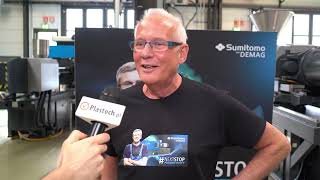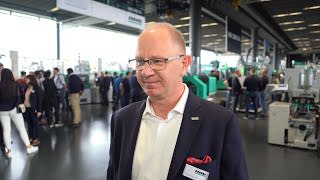Thus, the performance of rotary tables is mostly restricted to the insertion of parts, transport, and demoulding resp. transfer to other processing machines independent of the injection moulding machine.
Further operational steps are carried out by peripheral equipment, which requires extra space and, more important, entails a significant increase in processing time. In this case six-axis robots operating within a cell are a great advantage.
As a subsequent developmental step to make the work more easy, linear and swan-neck robots were employed. Accurate and rapid feeding of the blanks / inserts, their demoulding and transfer simplified the work process, dueto the use of robot technology. However, this initial generation of robots was rather inflexible. For example, many robots and their range were relatively hard to adapt to the respective application and necessary movements.
Besides the programming, which still has to be done today, former robots often had to be repositioned for varying tasks, to guarantee that the mould, the injection moulding machine, and downstream processing stations would cooperate without trouble. Many times automation cells were designed and used for just one specific application. After the entire order had been produced the automation cell, together with the robot, was stowed away pending the next order. As this was not really effective, a way had to be found to make robot technology available on a larger scale for other applications, too.
The solution is the separation of robot and automation cell. If, when setting up the injection moulding machine, the mould has to be changed and the automation adapted, a modular design ensures that only the cell has to be detached from the machine frame and exchanged for another modular unit. The position of modern six-axis robots can be retained without change.
All that has to be done is enter the programming steps pertaining to the application into the control, and serial production can start right away. Due to an ideal, fixed position of the robot on the frame of the injection moulding machine, the mounting of a new automation cell and its integration in the programme cycle of the travelling movement will be simplified significantly.
At several exhibitions the BOY 55 VV demonstrated how such lines work in practice. This insert moulding machine from the specialist for injection moulding machines with clamping forces up to 1000kN fully automatically overmoulded hexagon socket screw keys of varios sizes.
Based on Dr Boy informations


